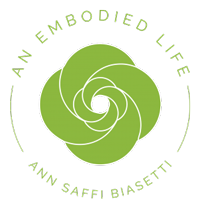Every New Year’s day I am lucky enough to teach a special yoga class on starting the year off with intention and compassion. I specifically teach on formulating intentions over resolutions for many reasons. The most important one is the relationship intention has to purpose.
Resolutions are goal and attainment-focused and are often created out of the wish or need to change something in our lives, hence the reason they are set in the New Year as a way to begin again in a new way.The problem is, for something to change we have to set a new way first. The new way needs to begin with releasing the goal. Intentions can be looked at more as an ongoing wish. They are born from what is most important to us and from looking and searching within not outside of ourselves. They are born from trust and compassion as well. Trusting that if you find what is most important to you, your purpose, that you will move forward in following it. That does not mean you won’t fall at times, or slip back to old habits, rather, we come to understand them in a different way now. When our intentions are held with a compassionate heart we can embrace the understanding that things won’t always go as planned. Nothing is a straight line. We can get back up and start again. Intentions, just like self-compassion hold us in a new and different way.
In my book, Befriending Your Body, I discuss starting in chapter one going forward, the importance of setting intention day in and day out around your body’s health and strength and ask you to consider this as your daily guide. Each and every day is guided by the intention toward recovering strength and well-being in body and mind. It is an intention guided by the heart, through compassion which says, the best I can do is try.
Use the following reflective questions from chapter one of my book as your daily guide to set intentions around your strength, health and well-being moving into the new year:
1) What makes you feel strong in your body? What makes you feel strong in your emotions?
2) What makes you feel healthy in your body? What makes you feel healthy in your emotions?
The answers to these questions are the things that are most important to you and your body going forward each day.
